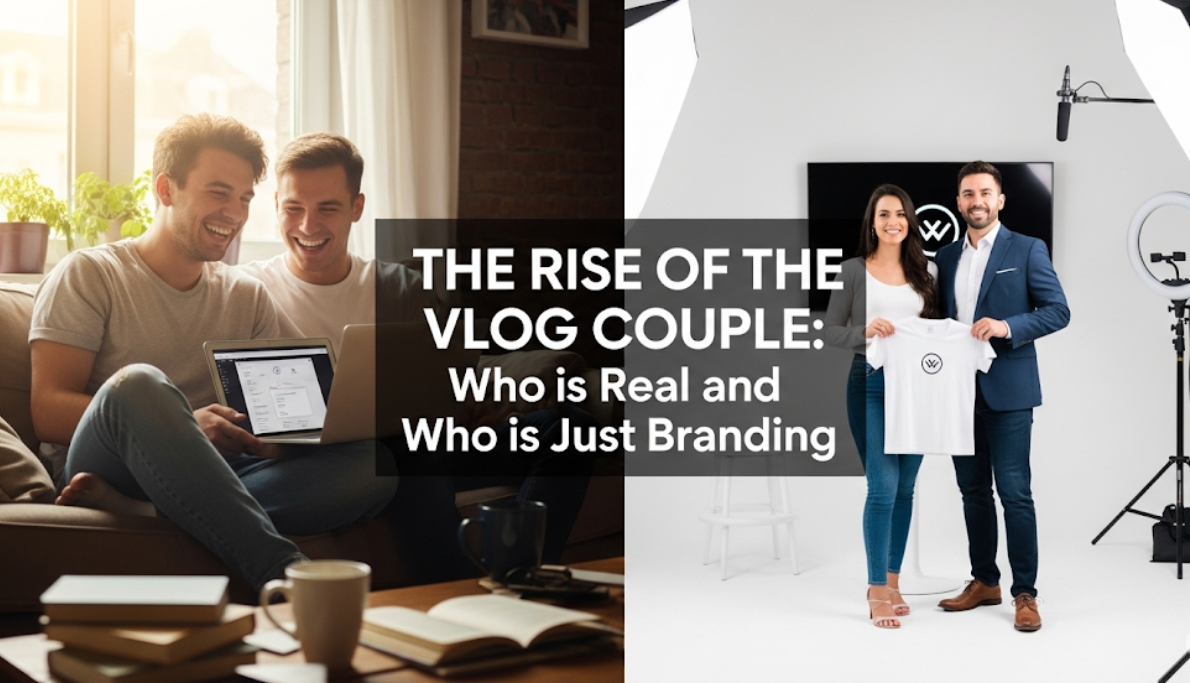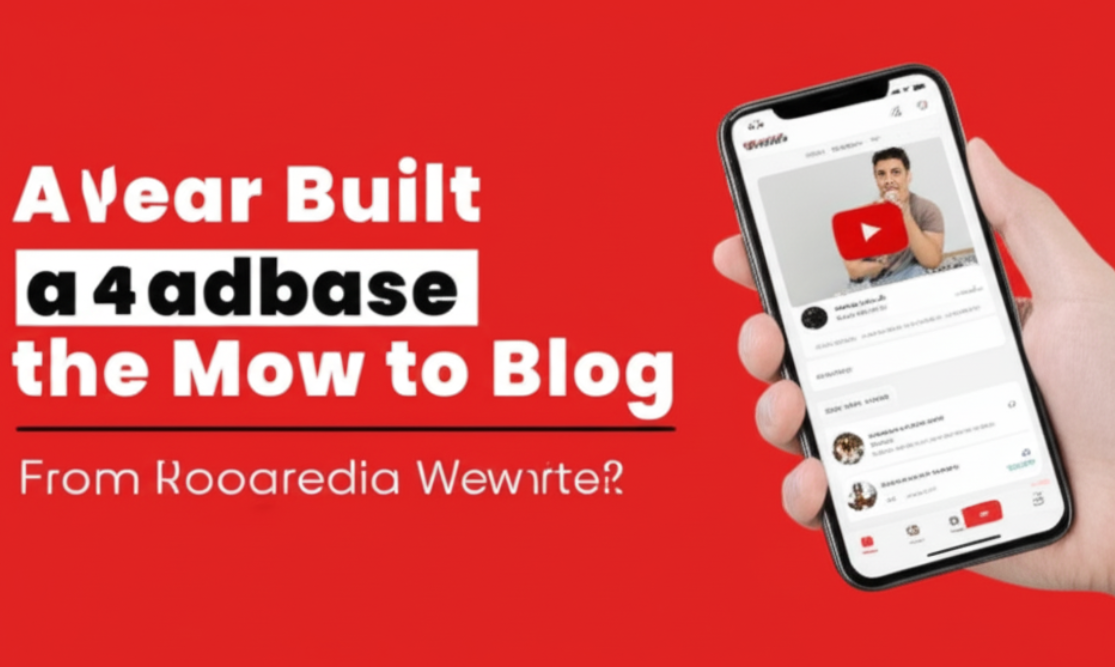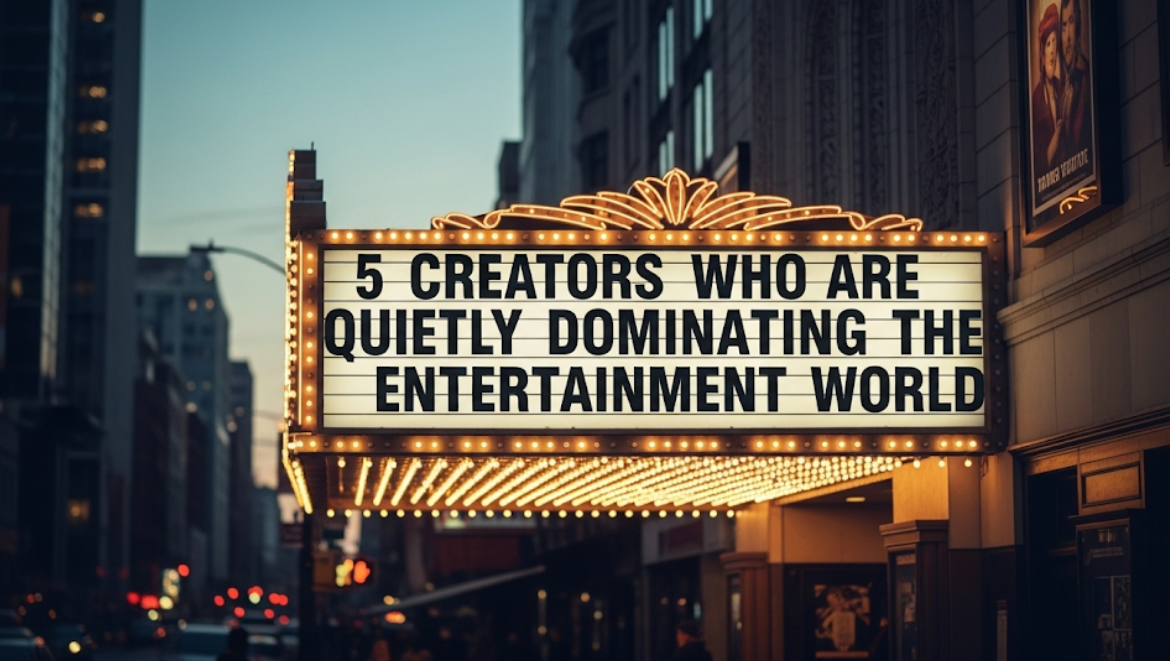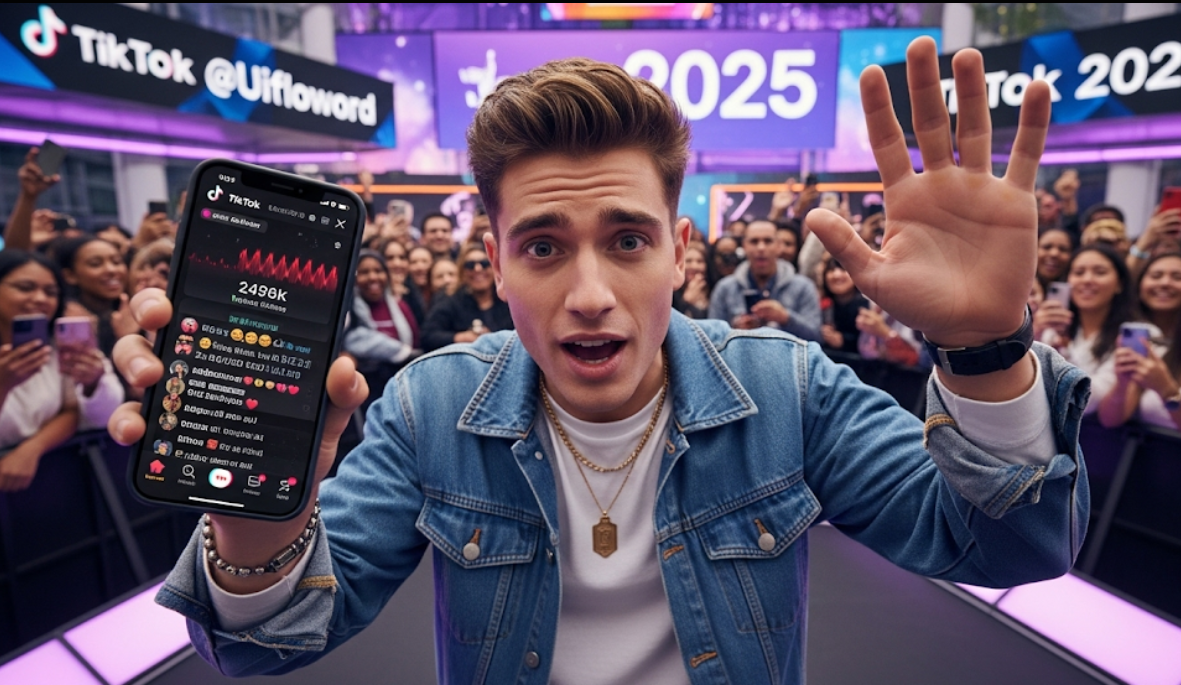Ed Zitron: The Rise of the Vlog Couple—or, Who’s legit and who’s just branding?
Move over, instacelebrity; make room for the vlog couple. They cook together and prank each other, and they build businesses together, over the top of our screens—and sometimes they rack up millions of followers. But with the creator economy growing up, viewers are left to wonder: What these really just on-screen relationships by some couples to make more customers subscribe?
The world of couple vlogging has evolved from home videos with a diary feel over the last decade to a fully fledged media and commerce machine. From haphazard snippets to fuel behind fashion lines, paid trips and products, and yes, entire family networks. This has driven a massive commerce where everyone benefits from the performances of breakdowns and break-ups more authentic than any mukbang, yet also made authenticity (or being good at pretending to be good) the most valuable trait that an artist can possess. Forbes, Vogue Business
Here I explore how to identify the branding vs. reality, where the formula is most susceptible and what its future holds.
At a glance: why couples vlog now
Influencer marketing is massive. Billions of dollars annually was spent by brands on creator partnerships, couples were irresistible because their power is (ostensibly) exponential – they double the ways in which your packages can be told and retold (his-and-hers POVs, dual-oriented product lines, family narratives). The focus of marketing, therefore, becomes not just the personalities themselves but their very relationship. Forbes
Platforms reward relatability. Algorithms drive all sorts of intimate-feeling content: routines, fights, reconciliations, milestones in short-form video and “authentic” long-form vlogs. It is that intimacy that drives watch time, loyalty and ad/sponsorship value. Vogue Business
Regulation increased alongside audience skepticism. The more things become sponsored — the heavier we treat disclosures and other rules play, there are darker worlds of manufactured moments out there. The result: creators have to pretend like they are being genuine in order to balance monetization, and as a result, end up failing very publicly. Federal Trade Commission
The truth-performance spectrum: no binary view
Authenticity isn’t binary. Almost nobody is this “totally private” – which means everyone more or less fits in between “totally private” and “fully produced”. I want you to even think of it being a spectrum overall in the relationship itself:
Social media-first couples: Document their lives on platforms, but resist monetizing too much (occasionally use sponsors or adopt a line in the sand tactic like not allowing kid content).
Content-first pairs: Content is king and they want to be sure their relationship can get if you have a great story, new episode or idea – more staging, larger cliffhangers, even more brand integration.
Business-first couples: Business is probably the main thing (product works, cooperative plans). Their business and their life becomes blurred on the public side.
Knowing which couple is where helps you judge if what you see is possibly real or rigged.
8 Clues That a Vlog Couple is Tilting Toward the “Branding” End (Rehearsed or Exaggerated)
Perpetual product integration in everyday moments — when an “impromptu” fight or date night article is actually a product placement, that intimacy is being manufactured. Search for this type of easy transitions between real life acting and advertising. Forbes
Regular, episodic story arcs — regular variations on “we were about to break up” or “something surprised us” that repopulate every quarter signal a storytelling schedule.
Abrupt shifts in tonality via editing — If an action-packed scene is cut with fun music or snappy montage like they are in a zany little movie, it’s likely meant to entertain, not be real.
Concurrent cross-platform drops — or even just the act of matching posts, TikTok dances, or coordinated launches across channels — are usually a good indicator of PR-style scheduling rather than organic sharing.
Heavy brand ecosystem — if you use the brand ecosystem to actually be a person selling other things such as multiple products, some fashion line being an example or memberships tied into the image of the couple then it’s likely couples will make sure they keep up appearances. Forbes
Performatively “authentic” authenticity — when creators are like “I am not like others” i.e., such and such is just me (yet their style and scripting mirror so many other influencers, this then becomes a form of pseudo anti-influencing in itself). Vogue Business
Legal/PR fallout — things that repeatedly devolve into controversies where a lot of the behind-the-scenes reporting contradicts what the audience is presented with on-camera (Ellie and Jared in 2019, Family Vlogger scandals, documented breaches of trust). People.com
Zero real-life overlap — e.g., publicized “friends” and family only appear on orchestrated cue or offline appearances are scarce… then it’s more media representation than lived reality.
Why Viewers Still Watch (Even When They Think It’s Staged)
Emotional attachment with an intimate and accessible creator. Yes, you might realize a relationship was partly built in reality TV’s editing room, but the emotional payoff can be very real. Frontiers
A vlog couple marketplace: Any content, be it a blog, website or YouTube channel, should go for the aspirational angle — those who are buying have room to dream. Fans get memberships, merch, or the fantasy. Forbes
Curiosity and schadenfreude: Drama sells. Even audiences that are skeptical want to know how a story ends.
Something to attract and educate: Even if people come for the drama, those who actually learn something—like parenting tips or travel hacks—from couples provide actual value.
Famous cautionary tales (brief examples)
Family vlogs and the ethics thereof — with their monetization of children’s lives, some family vloggers have come under serious fire for allegations regarding legal/ethical decisions made on their channel — to the point where the channels were under investigation by a platform or documented unfavorable behaviors done at said discretion. Those are examples of the kind of harm that can happen in the real-world when content creation puts well-being on the line. People.com
The news is even more horrifying to those who benefited from the endorsements used to develop a brand out of a couple. For instance, the ACE Family seemingly sparked a whole new conversation around how private chaos manifests within our public monetization. People.com
Real versus fake authenticity & how creators achieve it
Authenticity isn’t just “unscripted.” It’s a practice. Viewers reward creators who demonstrate:
Clear sponsor tags and honesty — transparent disclosure of payment. For that, the FTC mandates disclosing material connections — creators who do this successfully build trust. Federal Trade Commission
Boundaries — when creators establish, e.g., that kids will never be filmed and ensure those boundaries are respected it increases the likelihood of their content being quality.
Vulnerable but not exploited — real struggles but not over dramatized for clicks. Few own that balance, but it is as sought after as anything. Frontiers
Co-creation with fans — capitalizing on audience feedback in product design or storytelling (rather than manufacturing relationship drama) — generates true community.
When the above behaviors are encouraged, commercial concerns can generally protect themselves while still allowing enough authenticity to remain credible.
What Platforms + Brands Should Do
Brands need to build partnerships with creators’ actual audiences in their strategy — otherwise, token placements in staged relationship arcs undermines trust and kills conversions. Sponsorship that crashes get outperformed by smart brand-creator fit and authentic alignment study shows SAGE Journals
Disclosure signals could be surfaced more proactively by platforms to penalize deceptive practices; if influencer markets continue swelling, so will regulatory scrutiny as well as audience backlash. As influencer advertising has proliferated, the FTC updated guidance (years later) to specifically address native advertising on social media — creators can now be prosecuted and disgraced or deplatformed for undisclosed material connections. Federal Trade Commission
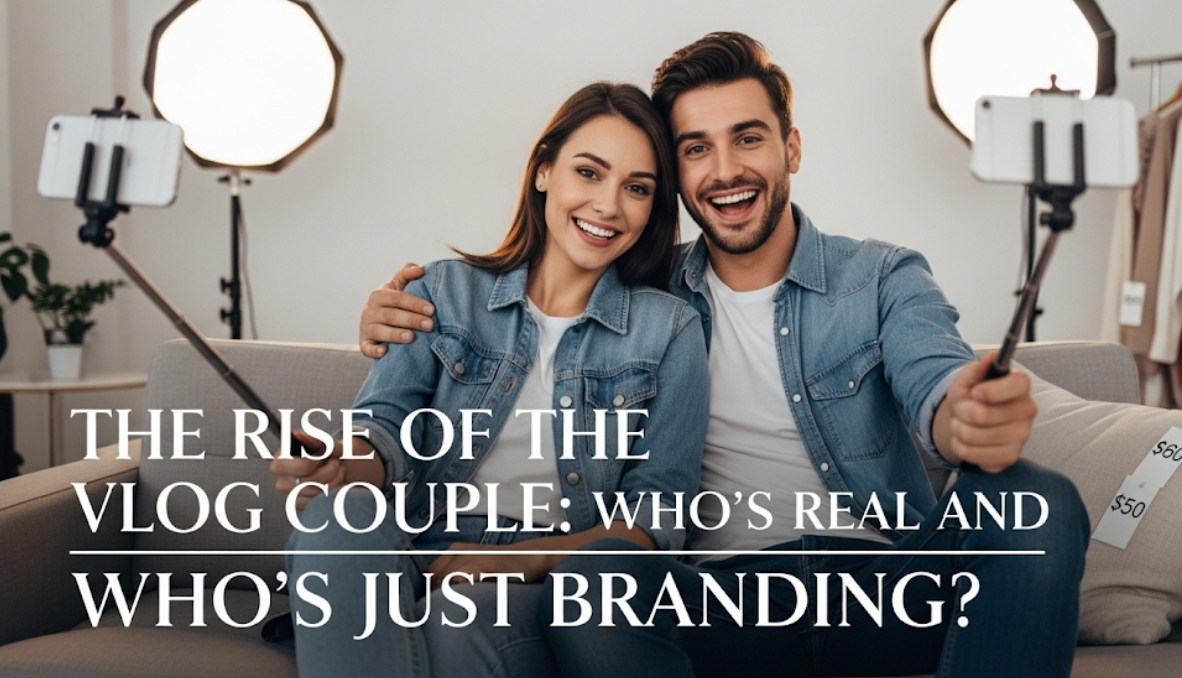
Quick Tips for the More Savvy Viewer
Search out sponsored posts — or ones that have explicit disclosure language or tags. If it’s missing, be skeptical. Federal Trade Commission
Verify across sites — are major “scoops” released at the exact same time on more than one platform? That usually signals PR coordination.
Beware of editing patterns — cinematic, ultra-polished cutaways can convey a produced narrative.
Look for independent reporting — news articles, investigations; goes beyond the comments; often will reveal contradictions/legal problems. People.com
What’s next: hybrid models and platform evolutions
A game of musical chairs between perceived authenticity and monetization. Raise one, lower the other.
Hybrid monetization: Sponsorships plus better/more integrated community models (memberships, micro-payments) where true relationships are rewarded and less about top-of-the-funnel drama.
AI and virtual influencers — the rise of virtual creators further muddles credibility: audiences might follow synthetic relationships that are almost realistic, yet entirely manufactured. That will force enhanced disclosure and media literacy.
Tighter adherence — as overstatements and deceptive measures surface, regulations and platforms will possibly step up adherence and enforcement around disclosure and teens’ privacy. National Trade Council
Last take: Love, authentic or performative, is now a business – and whether or not it’s aboveboard. Vlog couples reveal a cultural reality: intimacy is a valued currency. Audiences prevail when creators treat that intimacy ethically – expose sponsorships and unfair labor methods, guard vulnerable people in their settings, and prevent exploiting personal miseries for content. When that intimacy becomes merely a sales tool, viewers eventually track it down and abandon their favorite creators.
If you crave authenticity, support it: subscribe to creators who display consistent boundaries and transparent partnerships, study independent journalism, and view romantic stories online with a reasonable mix of fascination and skepticism. If you are a creator, keep in mind that authenticity is a long-term effort. Honesty and care for your audience pays off even more consistently than manufactured highs.
Sources and further reading
- Federal Trade Commission – Guidelines for influencers and endorsements
- Forbes.com – Why Influencer Partnerships Work
- Vogue Business – Authenticity in influencer marketing by 2024
- People.com – Family vlog conflicts and unexpected casualties
- Academic literature on authenticity and credibility – ScienceDirect, Frontiers


